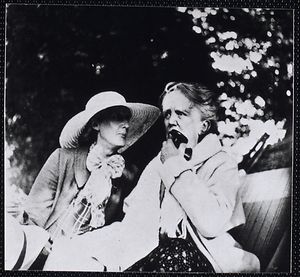In response to this week's
events, the community relations manager of
Progress Energy was kind enough to write yesterday in an effort to persuade me that the Shearon Harris plant is safe and law-abiding. But I am sorry: this version
doesn't fit the facts. Here is Mr. Clayton's memo, annotated by Pete MacDowell of
NC WARN.
To: Sally Greene
Chapel Hill, Town of
From: Marty Clayton
Progress Energy
September 22, 2006
The Harris Plant has been in the news this week and we want to make sure you have the facts.
Harris Plant outage
The Harris Plant tripped offline at approximately 10 a.m. Tuesday morning when a relay device inside the plant’s generator failed. Nuclear plants are designed to automatically shut down when components fail in order to protect plant equipment and to ensure the health and safety of the public. Shutdowns are the result of properly functioning safety systems.
The cause of the outage was an electrical problem, similar to tripping the breaker in your home, and was not related to the reactor or the nuclear side of the plant. After conducting extensive precautionary testing on the relay and other nearby components to ensure the relay was the sole cause of the outage, the device was successfully replaced Thursday afternoon.
The plant began startup procedures Thursday evening, and began making and sending power to our customers again early this morning.
Petition to suspend the Harris Plant’s license
NC WARN and others filed a 2.206 petition on Wednesday, which is a mechanism the Nuclear Regulatory Commission (NRC) established to allow the public to be involved and engaged in its oversight process. We expect the NRC will review the petition to determine its merit.
Progress Energy and the Harris Plant will work with the NRC in the appropriate manner to address this petition.
Fire safety at the Harris Plant
Allegations of inadequate fire safety at the Harris Plant are simply not true.
It’s interesting that he is saying the company regards their fire safety as “adequate.” Unlike spokesperson Julie Hans, he is not claiming here that they are in compliance with the fire regulations.
There are multiple layers of fire protection barriers in place at Harris.
(Multiple layers of inadequate fire barriers that don’t meet safety regulations is not the path to safety. I wouldn’t walk into a fire in a multi-layered paper fire suit – regardless of the number of layers.) Fire-sensitive cables are wrapped in fire retardant material
(that is Hemyc, which failed to meet NRC requirements), surrounded by automatic detection devices
(fire detection is not fire suppression) and sprinkler systems
(sprinkler systems do not satisfy the regulations), and are located in rooms separated by thick concrete to prevent the spread of any fire
(the Thermolag, Hemyc, and MT retrofitted and inadequate fire barriers were installed to make up for the fact that cable trays were too close together and were in the same rooms). Additionally, we employ human fire protection, with an on-site fire brigade and teams of individuals (six to eight per shift) who work around the clock, walking the plant in search of fires or fire hazards
(these are roving fire detection people who may be in a given area a minute or two an hour and plant firefighters who are hardly an adequate substitute for required in-place fire barriers).
Over the last several years, the NRC’s regulations for fire protection have changed – the Harris Plant has been responsive to the NRC’s requests every step of the way and is making modifications to meet new NRC requirements in the time allowed by the NRC. With compensatory measures, the NRC considers the Harris Plant to be within guidelines for safe operation.
(The basic fire safety regulations have not changed and Progress Energy has fought coming into compliance every step of the way. The NRC’s willingness to not enforce its own fire safety regulations for the last 14 years is the ultimate problem. It is the public that is at risk. And it is the public that has to effectively insist that this potentially catastrophic risk is minimized.)
It is our responsibility to ensure the health and safety of the public and we take that responsibility seriously, as do the nearly 450 highly qualified and experienced plant employees. They work here and raise their families in this community. The last thing our employees would accept is an operating condition that presents a danger to themselves or the public.
If you have additional questions about these or other issues, please do not hesitate to contact me.
Thank you,
Marty
Marty Clayton
Manager - Community Relations
Progress Energy
919-878-5300
